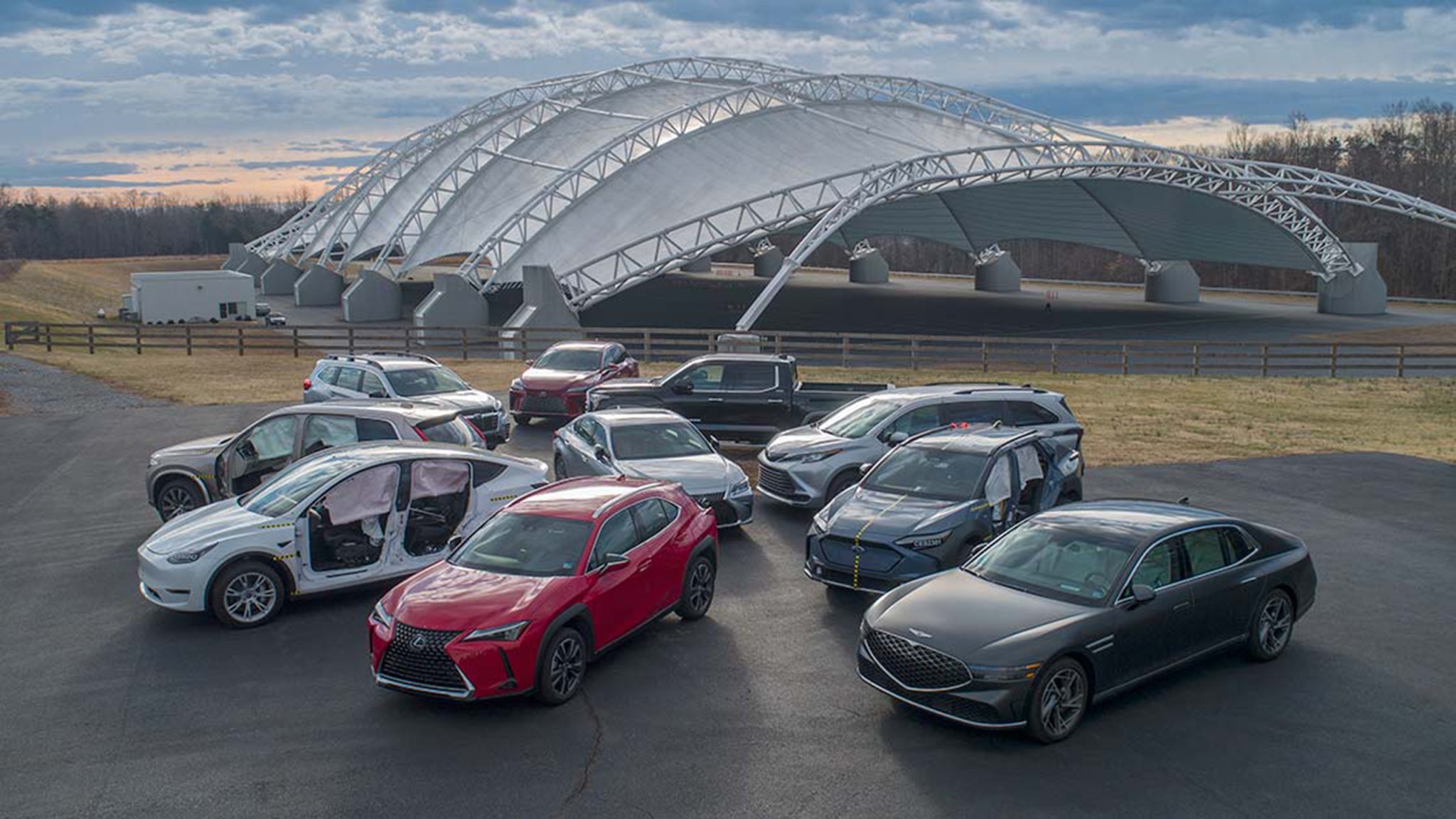

The Insurance Institute for Highway Safety rolled out its updated criteria for its coveted Top Safety Pick and Top Safety Pick+ awards, its latest revision since it last updated the criteria in 2021. This time, the IIHS will require cars to achieve a “Good” rating for its updated side test and an “Advanced” or “Superior” rating for daytime and nighttime front pedestrian crash prevention. “Acceptable” or “Good” headlights are standard on all trim levels to be a Top Safety Pick, instead of only available on a specific trim.
The IIHS even outlined how it would ratchet up the criteria next year with more stringent criteria including a better performance in the updated side and moderate crash tests. The changes to the test winnow down last year’s Top Safety Pick and Top Safety Pick+ winners from 101 to 48. In 2022, the IIHS awarded 65 vehicles its TSP+ designation, down to 28 this year. It’s unclear how many vehicles would qualify for the awards next year. The TSP+ winners for 2023 span a wide spectrum of prices and sizes, from the Acura Integra and Honda HR-V to the Rivian R1T and Tesla Model Y.

As the IIHS pressures automakers to make their cars safer and to equip them with crash prevention tech and pedestrian avoidance features, the schism between the IIHS safety standards and the federal guidelines grow. As the IIHS pointed out, several of its tests have been adopted by the feds for its own car-testing program, albeit several years after the insurance industry-funded group implemented them.
And, while automakers are required to prove their cars’ crashworthiness to sell their cars in the U.S., not all of those ratings are made public. The IIHS conducts its own tests separately from the feds, but not on all models. The IIHS purchases its cars from dealers independently (or allows manufacturers to “jump the line” by reimbursing the IIHS for a car it buys to test), but the IIHS does not comprehensively test every model on the road.
All of those point to a safety rating system that is nearly inadequate by the feds, and ever-increasing by the IIHS with continually updated criteria that could be hard for shoppers to follow.
Got a tip? Send it in to tips@thedrive.com